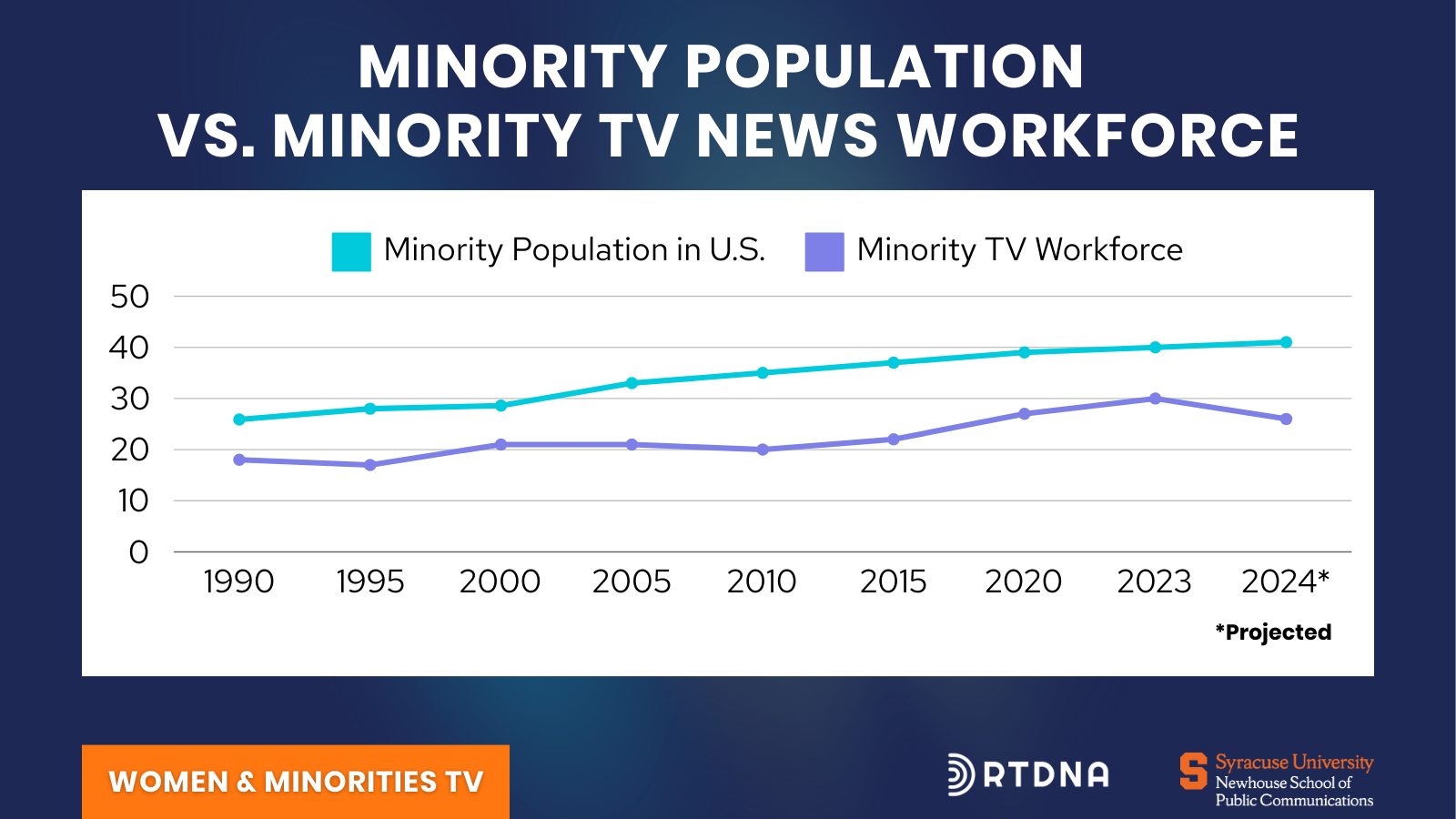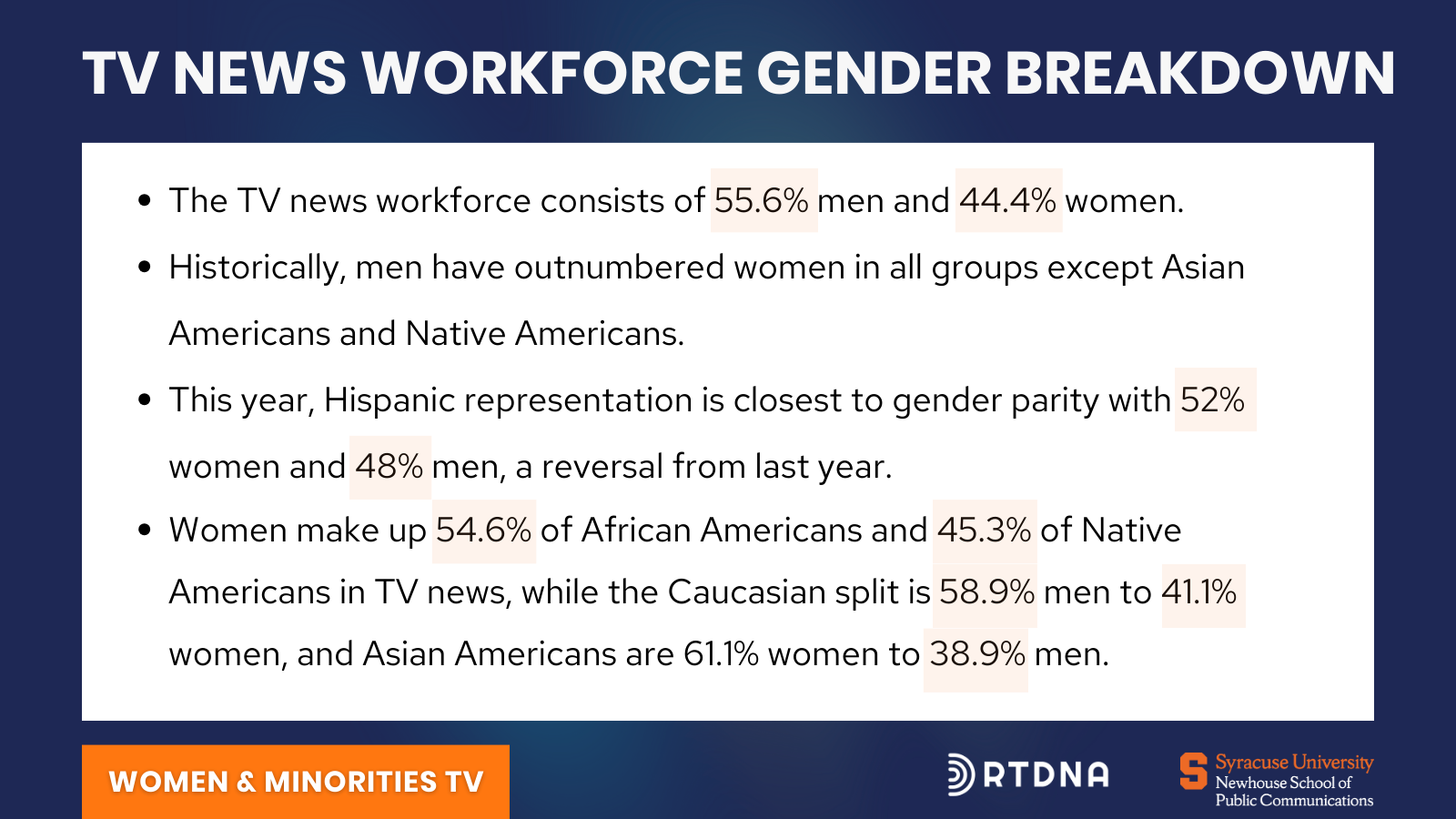TV news diversity declines

By Bob Papper and Keren Henderson
July 16, 2024 — The latest RTDNA/Newhouse School at Syracuse University Survey finds the minority workforce in TV news dropped nearly four points from last year’s record high of 29.6% — down to 25.7%. The minority workforce at non-Hispanic TV stations also fell from their all-time high of 28.4% last year to 24.5% this year.
Women in the TV news workforce stayed nearly the same, sliding from 45% to 44.4%. The one bright note was women news directors, which hit an all-time high of 41.8%, up from last year’s record of 41.3%.

Overall, the TV news workforce is 55.6% men and 44.4% women. Historically, in TV news, men have outnumbered women for all groups except Asian Americans (where women have always outnumbered men) and Native Americans (which have commonly been about even). But there have been several slow, steady changes over the last several years.
This year, the group closest between men and women is Hispanic, where women are 52% and men are 48%. That represents a reversal from last year. Next is African American, where women make up 54.6% versus men at 45.4%. Native American is right behind, where men make up 54.7% of the workforce and Native women are 45.3%. The Caucasian split is 58.9% men and 41.1% women. Asian Americans split 61.1% women and 38.9% men.

About the Authors
Bob Papper is Research Professor of Broadcast and Digital Journalism at Syracuse University and has worked extensively in radio and TV news.
Keren Henderson is Associate Professor of Broadcast and Digital Journalism at Syracuse University.
This research was supported by the S. I. Newhouse School of Public Communications at Syracuse University and the Radio Television Digital News Association.
About the Survey
The RTDNA/Newhouse School at Syracuse University Survey was conducted in the fourth quarter of 2023 among all 1,876 operating, non-satellite television stations and a random sample of 4,764 radio stations. The television response rate is different for every question, but Valid responses came from as many as 1,387 television stations (73.9%) and 631 radio news directors and general managers representing 1,902 radio stations. Some data sets (e.g. the number of TV stations originating local news, getting news from others and women TV news directors) are based on a complete census and are not projected from a smaller sample.
